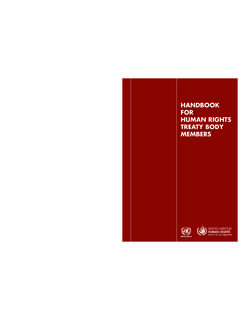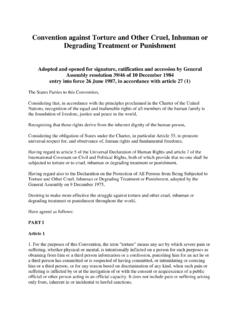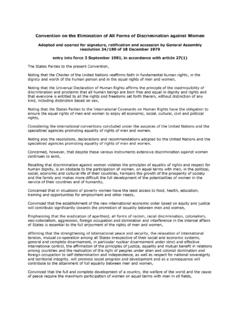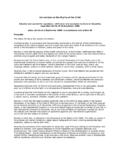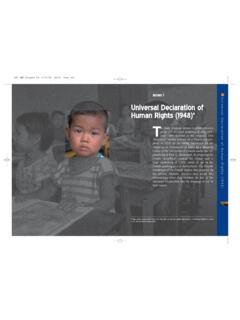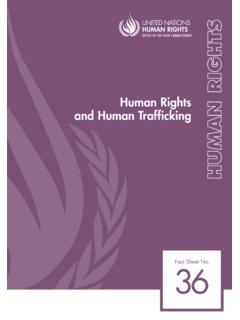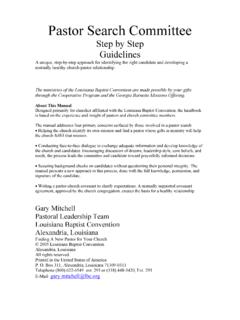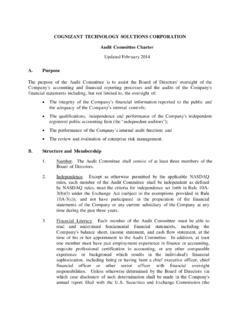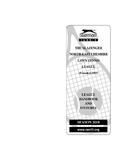Transcription of Fact Sheet No.17, The Committee against Torture
1 Fact Sheet , The Committee against TortureContents:oIntroductionoA monitoring bodyoThe Committee at workoCooperation with other bodiesoPrevention or cureAnnexes:oI. Convention against Torture and Other Cruel, Inhuman or Degrading Treatment orPunishmentoII. List of States which have signed or ratified the Convention against Torture and OtherCruel, Inhuman or Degrading Treatment or PunishmentoIII. Declarations made under articles 21 and 22 of the Convention against Torture andOther Cruel, Inhuman or Degrading Treatment or Punishment as at 1 January 1992oIV. Composition of the Committee against TortureoV. Model communicationIntroductionThe eradication of the practice of Torture in the world was one of the major challenges taken up bythe United Nations only a few years after its establishment.
2 In order to ensure adequate protectionfor all persons against Torture and other cruel, inhuman or degrading treatment or punishment, overthe years the United Nations has adopted universally applicable standards. These standards wereultimately embodied in international declarations and conventions. The adoption on 10 December1984 by the General Assembly of the United Nations of the Convention acainst Torture and OtherCruel, Inhuman or Degrading Treatment or Punishment rounded off the codification process tocombat the practice of developing this valuable instrument, the United Nations did not merely put in writing in a seriesof articles a body of principles and pious hopes, the implementation and observance of which wouldnot be guaranteed by anything or anyone.
3 It set up also a monitoring body, the Committee acainstTorture, whose main function is to ensure that the Convention is observed and implemented. TheCommittee met for the first time in April 1988 in Geneva and has since carried out intensiveactivities which, although often discreet, should make it known to the public at monitoring bodyThe Convention against Torture and Other Cruel, Inhuman or Degrading Treatment or Punishmentwas adopted on 10 December 1984 by the General Assembly of the United Nations. Consisting of 33articles, this instrument, which 58 States had ratified or acceded to as of 1 January 1992, enteredinto force on 26 June Committee against Torture was established pursuant to article 17 of the Convention and beganto function on 1 January Committee consists of 10 experts of high moral standing and recognized competence in thefield of human rights.
4 The experts, who must be nationals of States Parties, are elected by thoseStates by secret ballot. They are elected for a term of four years and are eligible for re-election. Thepresent composition of the Committee and the list of States Parties are indicated in the Committee constitutes a new United Nations body, entrusted with the specific su 'pervasion of amultilateral instrument for protection against Torture and other inhuman treatment. The Conventionsets out a number of obligations designed to strengthen the sphere of protection of human rightsand fundamental freedoms, while conferring upon the Committee against Torture broad powers ofexamination and investigation calculated to ensure their effectiveness in their initial meeting held at Geneva in April 1988, the members of the Committee against Tortureadopted rules of procedure and defined the Committee 's working methods, in conformity with theprovisions of the Committee at workThe Committee normally holds two regular sessions each year.
5 Special sessions, however, may beconvened by decision of the Committee itself at the request of a majority of its members or of aState Party to the Committee elects from among its members a Chairman, three Vice-Chairmen and a officers are elected for a term of two years and are eligible for Committee may invite specialized agencies, United Nations bodies concerned, regionalintergovernmental organizations and non-governmental organizations in consultative status with theEconomic and Social Council to submit to it information, documentation and written statements, asappropriate, relevant to the Cornmittee's activities under the Convention. It submits an annualreport on its activities to the States Parties and to the General Assemblv of the United by the States PartiesSubmission of reports by States PartiesPursuant to article 19 of the Convention, each State Party shall submit to the Committee , throughthe Secretary-General of the United Nations, reports on the measures taken to give effect to itsundertakings under the Convention.
6 The first report must be submitted within one year after theentry into force of the Convention for the State concerned; thereafter supplementary reports shallbe submitted every four years on any subsequent developments. Further reports and additionalinformation may also be requested by the each session, the Secretary-General of the United Nations notifies the Committee of all cases ofnon-submission of the said reports. In such cases, the Committee may transmit to the State Partyconcerned a reminder about the submission of such report or to the actual formulation of the report, the Committee has prepared general guidelinescontaining precise instructions on their form and content in order to inform fully the Committee onthe situation in each State of the reports by the CommitteeFor the examination of the reports, the Committee invites representatives of the States Parties toattend the meetings when their reports are considered.
7 It may also inform a State Party from whichit decides to seek further information that it may authorize its representative to be present at aspecified meeting. Such a representative should be able to answer questions which may be put tohim by the Committee and clarify, if need be, certain aspects of the reports already submitted byhis its consideration of each report, the Committee , in accordance with article 19, paragraph 3, ofthe Convention, may make such general comments on the report as it may consider appropriate. Itmay, in particular, indicate whether it appears to it that some of the obligations of the Stateconcerned under the Convention have not been discharged. The Committee 's observations aretransmitted to the State Party, which may reply to 40 reports had been examined by the Committee by the end of its seventeenth session inNovember of investigation of the CommitteeBy virtue of article 20 of the Convention, the Committee is empowered to receive information and toinstitute inquiries concerning allegations of systematic practice of Torture in the States procedure set out in article 20 of the Convention is marked by two features.
8 Its confidentialcharacter and the pursuit of cooperation with the States Parties competence conferred upon the Committee by this article is optional, which means that, at thetime of ratifying or acceding to the Convention, a State may declare that it does not recognize it. Inthat case, and so long as that reservation has not been withdrawn, the Committee may not exercisethe powers conferred upon it under article 20 in respect of that State of informationIn respect of all the States which have accepted the procedure set out in article 20, the Committeeis empowered to receive information concerning the existence of the practice of Torture . If itappears to the Committee that the information received is reliable and contains well foundedindications that Torture is being systematically practised in the territory of a State Party to theConvention, the Committee invites that State to cooperate in its examination of the informationand, to this end, to submit observations with regard to that information.
9 It may also decide torequest additional information either from the representatives of the State concerned or fromgovernmental and non-governmental organizations as well as individuals, for the purpose ofobtaining further elements on which to form an procedureIf it considers that the information gathered warrants it, the Committee may designate one or moreof its members to make a confidential inquiry. In that case, it invites the State Party concerned tocooperate with it in the conduct of the inquiry. Accordingly, the Committee may request the StateParty to designate a representative to meet with the members designated to conduct the inquiry inorder to provide them with any information they consider necessary.
10 The inquiry may also include,with the agreement of the State Party, a visit to its territory by the designated members, who maythen conduct hearings of designated members submit their findings to the Committee , which transmits them, togetherwith its own comments or suggestions, to the State Party. It invites that State to inform theCommittee of the action it takes with regard to the Committee 's all the proceedings regarding an inquiry have been completed, the Committee may decide toinclude a summary account of the results of the proceedings in its annual report. Only in that caseis the work of the Committee made public; otherwise, all the work and documents relating to itsfunctions under article 20 are complaintsThe conduct, with respect to the States Parties, of proceedings relating to the inter-State complaintsmentioned in article 21 of the Convention is subordinated to the recognition by those States of thecompetence of the Committee .
